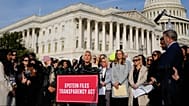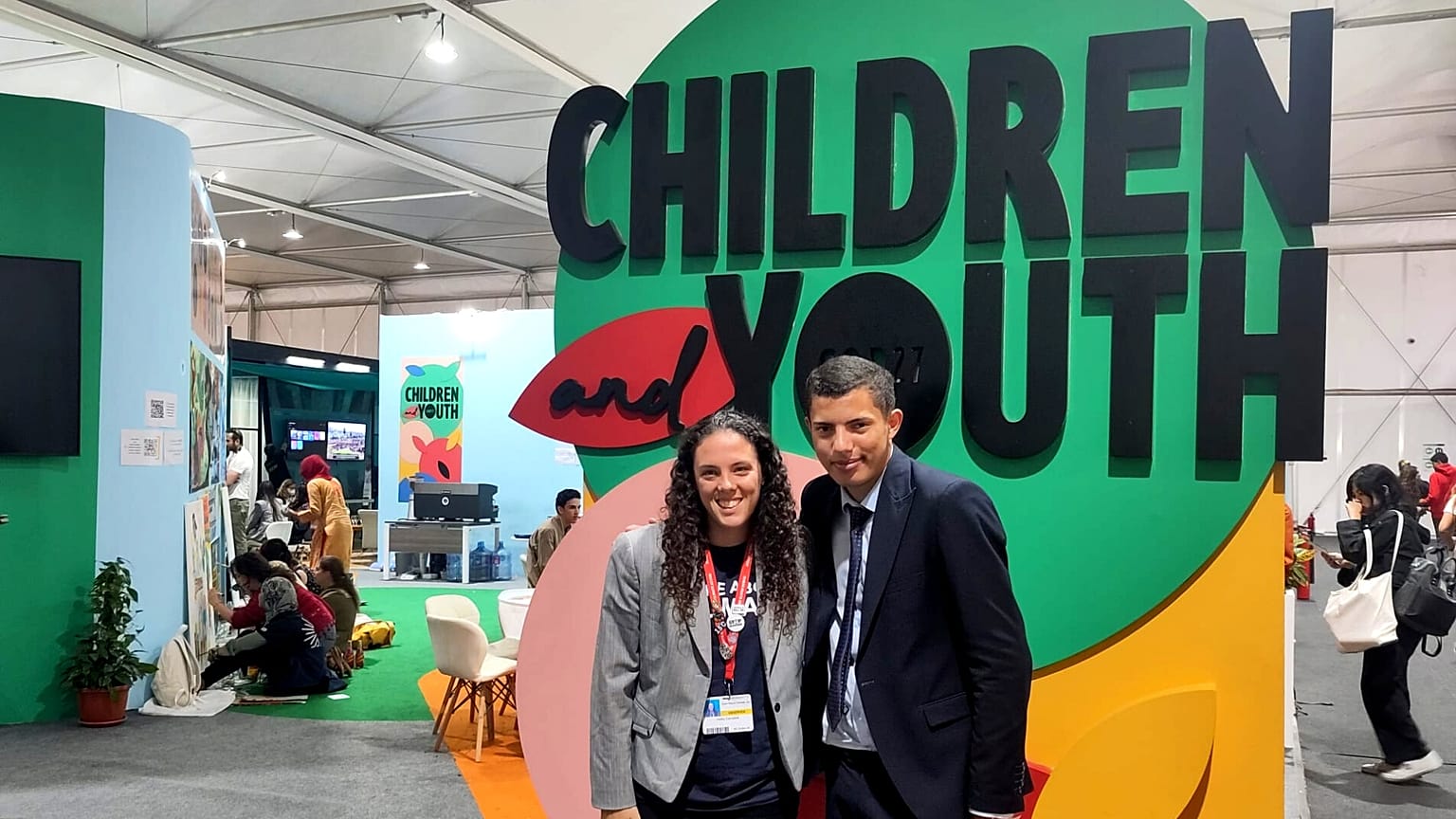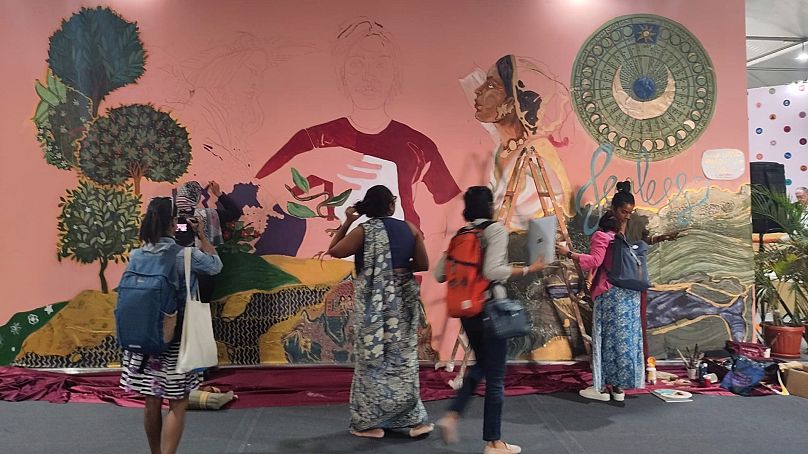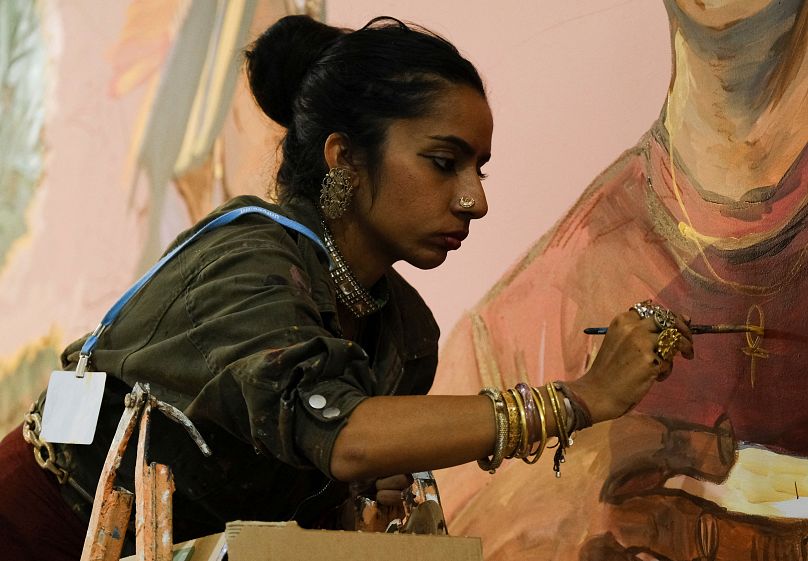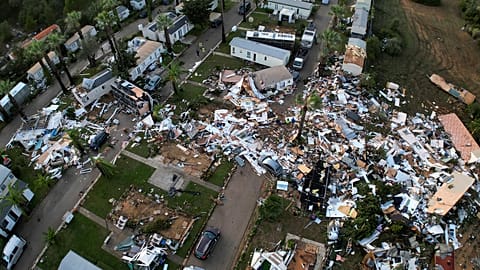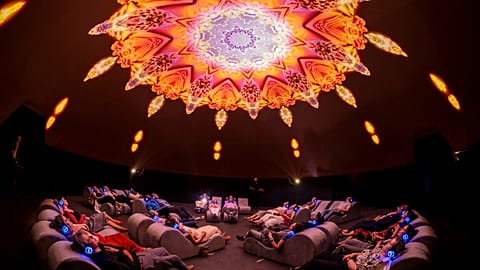“We are trying to have a higher moral compass than the decision makers,” say youth leaders.
In the maze of COP27, people have been flocking to one pavilion in particular: the space dedicated to children and youth.
If you’re looking for a bit of light from the summit, the hive of activity from young people is an unusually bright spot.
But it’s not just on the ground at the UN climate conference that the youth have staked a claim for the first time.
On Friday night, YOUNGO - the official youth constituency of the UNFCCC - celebrated securing official recognition as stakeholders in designing and implementing climate policies.
“We all cheered and cried at the end, which resulted in this beautiful photo together,” says Hailey Campbell, YOUNGO’s ACE ‘working group’ co-lead.
The recognition comes under an obscure article of the Paris Agreement. Action for Climate Empowerment (ACE) refers to the work of article 12 under which countries must empower people to be part of the solution to the climate crisis.
It often goes unreported on, says Hailey.
It’s also overlooked by the heads of delegations - the group of politicians, negotiators and other actors representing countries at COP27.
“Which is so sad, because I personally believe it’s the key to unlocking the just transition that we are all advocating for as young people.”
The 24-year-old youth leader from Hawaii, and 17-year-old Mohab Sherif, Egyptian spokesperson for youth inclusion, told Euronews Green what this step forward means.
What stake do young people have in climate negotiations?
At COP26 in Glasgow last year, parties adopted a 10 year work programme to further ACE’s vital aims of education, public awareness and international cooperation.
The action plan agreed in Sharm El Sheikh is one that the young people in YOUNGO have “fought relentlessly” to be officially recognised within and shape over the next four years.
So how will their status as stakeholders change things?
“In the international space, anything that’s written down, set in stone, and agreed to by parties that you can present, gives you the power to have influence.
“It acknowledges power,” says Hailey, likening it to the first requirement for written evidence if you plan to sue someone.
“This is the evidence we need to take to our governments to say we would like to be included in national delegations.”
“We are the future stakeholders anyway,” points out Mohab.
Climate justice is the loudest topic at COP27. It comes in the calls for loss and damage funding for the devastation in developing countries that have done the least to cause the climate crisis.
Intergenerational justice cuts across all borders, but it’s particularly pressing in Africa which has the youngest population in the world - around 70 per cent of people under 30.
“Every effort we are making right now will inevitably translate into what’s to come,” Mohab says, “we are trying to have a higher moral compass than the decision makers, obviously.”
What else are young people doing at COP27?
YOUNGO is only one mouthpiece for young people at COP.
A new Climate Youth Negotiator Programme (CYNP) has brought 55 teens and young adults into the negotiating rooms at COP27, providing crucial grants to young negotiators from the Global South.
“A much-needed injection of young voices can be doubly as powerful if it is buttressed by the deep understanding that ultimately we are all interconnected, that this is not about who wins and who loses, but rather how we build a future where everyone wins,” says former UNFCCC Executive Secretary Christina Figueres.
“My long history in the climate space confirms that it is precisely young people who can change the hearts and minds of so many oldies who are still resisting.”
The Loss and Damage Youth Coalition (LDYC) has also been leading the calls for just financing at the core of this COP. Their key demands include establishing a facility which provides new, additional and accessible funding.
They want to see the Santiago Network on Loss and Damage fully activated to help deliver this.
The success of the COP27 Children and Youth Pavilion
The organisers of the popular Children and Youth Pavilion hope it will have a lasting future impact too, creating a legacy of meaningful representation at future COPs.
Pavilions are the shopfronts of every country, giving them a chance to exhibit their greenest initiatives, discuss the impacts of climate change, and host panels.
There’s a variety of NGOs, civil society groups and even companies as well - a sprawling atlas where social media giant Meta rubs shoulders with Botswana. Money can’t buy you footfall, as the glossy but empty floor of Saudi Arabia’s space shows.
“What has brought young people to this space is not necessarily social media, it’s other young people sharing the word of this space that they feel comfortable in, connecting in, being their true selves, advocating for action and meeting others in,” she says.
Previous COPs have seen young people huddling together on the floor or whatever space they can find.
In Sharm El-Sheikh, they’ve had visits from CO26 and 27 presidents Alok Sharma and Sameh Shoukry.
“We’re always reaching out to parties first to have our voices heard and rarely do they reach out to us,” says Hailey.
“Politicians coming to this space taking photos - not necessarily taking the time to ask what's going on - are an example of what happens in negotiations when you come to COP,” she says.
But she’s happy to see them there. Especially if their photos get out into the world and help solidify the pavilion as a “cornerstone” of all future COPs.
“Do I wish that it might lead to a little bit more? Yes. But I think in the first year of having this pavilion - it's exciting. It's a stepping stone.”
Hailey and Mohab’s optimism is a tonic in the wider context of the summit, where change comes increment by gruelling increment. But if you’re looking for one undeniable reason for hope at the moment it’s this:
“We’ll be the ones who are voted into these positions or appointed as we are now also every day getting older,” says Hailey.
“And when we have that chance to truly get control, I think the world’s going to see a massive change towards the just future that puts culture, land, and community over profit.”


